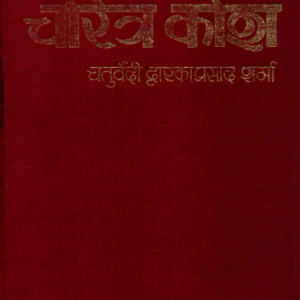Kosh
“Kosh” in the context of Sanskrit literature refers to a lexicon or dictionary, and it holds significant importance in the study and preservation of the Sanskrit language. Koshas are essential tools for understanding and interpreting classical texts, providing comprehensive collections of words along with their meanings, usages, and sometimes etymologies. They serve as invaluable resources for scholars, students, and anyone interested in the rich linguistic heritage of Sanskrit.
Historical Background
Origins and Development:
- The tradition of compiling koshas dates back to ancient India, where the need to understand and preserve the vast corpus of Vedic and classical literature led to the creation of these lexicons. The earliest koshas were composed to aid in the accurate interpretation of sacred texts, rituals, and philosophical treatises.
Famous Koshas:
- Over the centuries, several notable koshas have been compiled, each contributing to the understanding and preservation of Sanskrit. Some of the most renowned koshas include:
- Amarakosha:
- The Amarakosha, also known as the Namalinganushasana, is one of the most famous and widely used Sanskrit lexicons. Composed by the ancient scholar Amarasimha, it dates back to the early centuries CE. The Amarakosha is organized into three chapters (kandas) and provides synonyms, meanings, and grammatical information for a vast array of Sanskrit words. It is highly regarded for its comprehensive coverage and poetic structure.
- Medinikosha:
- Compiled by Medinikara, this lexicon is another important work in the tradition of Sanskrit dictionaries. The Medinikosha is known for its clear definitions and systematic arrangement of words, making it a valuable resource for students and scholars.
- Vachaspatyam:
- This extensive lexicon was compiled by the scholar Taranatha Tarkavachaspati in the 19th century. The Vachaspatyam is notable for its detailed entries and inclusion of words from various branches of knowledge, including philosophy, medicine, and astronomy.
- Shabdakalpadruma:
- Compiled by Raja Radhakanta Deva in the 19th century, the Shabdakalpadruma is a monumental work that provides comprehensive definitions, etymologies, and references for Sanskrit words. It is an invaluable tool for advanced study and research in Sanskrit.
Structure and Content
Organization:
- Koshas are typically organized alphabetically or thematically. In thematic koshas like the Amarakosha, words are grouped according to categories such as deities, plants, animals, and abstract concepts, making it easier to find related terms and synonyms.
Entries:
- Each entry in a kosh includes the word, its meaning(s), synonyms, grammatical information, and often etymological explanations. In some cases, koshas also provide example sentences or references to classical texts where the word is used.
Purpose:
- The primary purpose of a kosh is to aid in the understanding and accurate usage of Sanskrit words. They serve as essential references for scholars engaged in the study of Vedic texts, classical literature, philosophy, and other fields of knowledge.
Importance and Influence
Preservation of Language:
- Koshas play a crucial role in preserving the Sanskrit language by providing comprehensive records of its vocabulary. They ensure that the meanings and usages of words are accurately transmitted through generations.
Educational Tool:
- Koshas are indispensable educational tools for students of Sanskrit. They help learners understand the nuances of the language, expand their vocabulary, and gain insights into the cultural and historical context of words.
Cultural Heritage:
- By preserving the linguistic richness of Sanskrit, koshas also safeguard the cultural and intellectual heritage of ancient India. They provide access to the vast corpus of Sanskrit literature, encompassing diverse fields such as religion, philosophy, science, and the arts.
Scholarly Research:
- Koshas are valuable resources for scholarly research in various disciplines. They assist researchers in interpreting ancient texts, understanding historical developments in language and thought, and exploring the interconnectedness of different branches of knowledge.
Conclusion
Koshas are integral to the study and preservation of Sanskrit, offering comprehensive resources for understanding and interpreting the language. Through their meticulous compilation of words, meanings, and usages, koshas have preserved the linguistic and cultural heritage of ancient India. They continue to be essential tools for students, scholars, and anyone interested in the rich legacy of Sanskrit literature.
Showing all 2 results
Shabdkosh: शब्दकोष
Kosh


